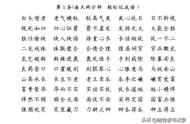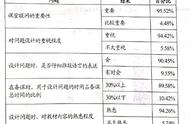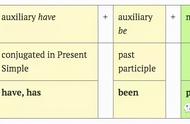【上期回顾】
【本期内容】
一、内容纲要


二、内容简述
(一)构成方式
该时态下,动词的形式是:am/is/are或do/does。
(二)基本用法
1)表当前的状况,包括天气、气候、国籍、职业、身份、状态等,如:
It is sunny today.
今天天晴。
It often rains in spring here.
这儿春天常下雨。
He is French.
他是法国人。
She is a nurse.
她是个护士。
They are my parents.
他们是我父母。
I am very tired.
我很累。
The students are in the park at the moment.
学生们此刻在公园里。
2)表目前的兴趣爱好,如:
I like coffee, but I do not want any now.
我喜欢咖啡,但我现在不想喝。
3)表目前的日常行为习惯,如:
The children usually go to school on foot.
孩子们经常走路上学。
She never eats too much for dinner.
她晚饭从来吃得不多。
4)表客观事实或真理,如:
The Pacific Ocean is the largest one in the world.
太平洋是全球最大的洋。
The sun is much bigger than the earth.
太阳比地球要大得多。
(三)标志词
一般现在时的标志词大多是频率副词,主要包括以下几类:
1)简单频率副词,即有单个单词表达的频率,如always、usually、sometimes、seldom、never等:
The man always gets up early in the morning.
那个人总是早起。
He seldom has coffee before sleep.
他睡前很少喝咖啡。
2)every 时间单位,如:
We go on holiday every summer.
我们每年暑假都会去度假。
3)次数 a/an 时间单位,如:
We visit our grandparents once a week.
我们每周都会去看望一次爷爷奶奶。
(四)动词的三单变化
1)直接 s,如:works, plays。
2) es,分以下几种情况
(1)以sh/x/ch/s/ss结尾,如:washes, fixes, teaches, misses。
(2)以“辅音字母 y”结尾,改y为i,再 es,如:studies, cries。
(3)以“辅音字母 o”结尾, es,如:goes, does。
3)不规则变化,如:have - has。
(五)句型变化
原句:He sometimes has some bread over lunch.
否定句:He does not sometimes have any bread over lunch.
一般疑问句及其回答:
- Does he sometimes have bread over lunch?
- Yes, he does.
- No, he doesn't.
划线部分提问:
How often does he have any bread over lunch?
(六)特殊情况
1、英语中的趋向动词(如go、come、leave、arrive)的一般现在时可以表将来。如:
Our plane leaves at 10 tomorrow morning.
我们的飞机明天上午十点起飞。
2、在基于现在时间的时间和条件状语从句中,经常用一般现在时来表将来,如:
If she has enough money, she will buy herself a new house.
她如果有足够的钱的话,会给自己买栋新房子。
3、在倒装句中表进行,如:
Here comes the bus. (车来了。)
相当于:The bus is coming.
There goes the bell. (铃响了。)
相当于:The bell is ringing.














